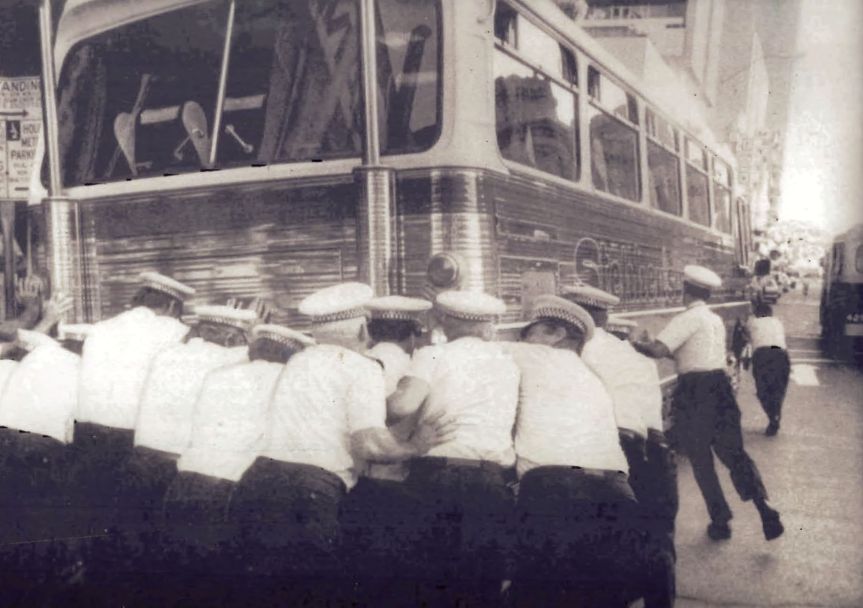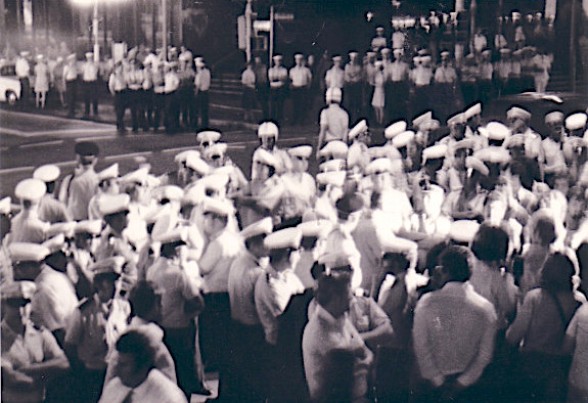Recently there has been much talk of millions of people wearing gilets jaune (yellow vests) in demonstrations in France. One report says this about the gilets jaunes: “These blockades were, weirdly, sparked by a petition, launched online by a young self-employed woman, Priscillia Ludosky. In the video accompanying the petition she explains that she is a working-class mother from Seine-et-Marne and spends 320 euros a month on gas.“
In 1977 during the street marches in Brisbane, a friend sewed up some yellow shirts for a group of us. On the yellow shirts she sewed a women’s liberation symbol, an anti-uranium symbol, and aboriginal flag and a red flag.
The yellow shirt was a symbol of unity at a time of sectarianism in the movement. I only got to wear my yellow shirt once. While marching out of King George Square we were attacked by police. We were pushed up against a plate glass window of the Commonwealth Bank on the corner of Albert and Adeliade Streets. The glass panel was bowing threatening to guillotine those of us pushed against it by police. I managed somehow to force my way to the curbside on Adelaide Street across from the square. Our group of about 40 people (only three of us were wearing yellow shirts that day) were now isolated from the main crowd of about 2000 in King George Square. Many had already been arrested. Police had used a bus to block our advance up Adelaide Street using undercover police directing the march in that direction. Others were now attempting to march down Adelaide Street.
Standing there, I railed against police standing in the valley of death as they arrested marchers and flung them into paddy wagons. As I shouted at police, a woman came up to me and tore the yellow shirt from my back. She yelled at me “there are police women as well as policemen!”
Apparently I had only referred to them as being policemen.
Soon after I was arrested and thrown into a paddy wagon myself. I was never sure what the woman’s point was or why she attacked me, especially given we were marching for democratic rights for women, Aboriginal people, workers and their trade unions, and for the right to organise against uranium mining and export
After two years and 3000 arrests, the government finally relented and allowed us to march. However it took another 10 years before the government fell. No government has been game to ban street marches since that time.
Many years later, I met the woman’s sister who told me how aggressive her sister had been down through the years and that she was a junkie.
Even with the best political intentions, in times of civil unrest, there can be mad outcomes and events. In our own small way we tried for unity amidst chaos.
Thereafter we referred to marching out of King George Square across Adelaide street into Albert Street, as marching into the Valley of Death (pictured below).






